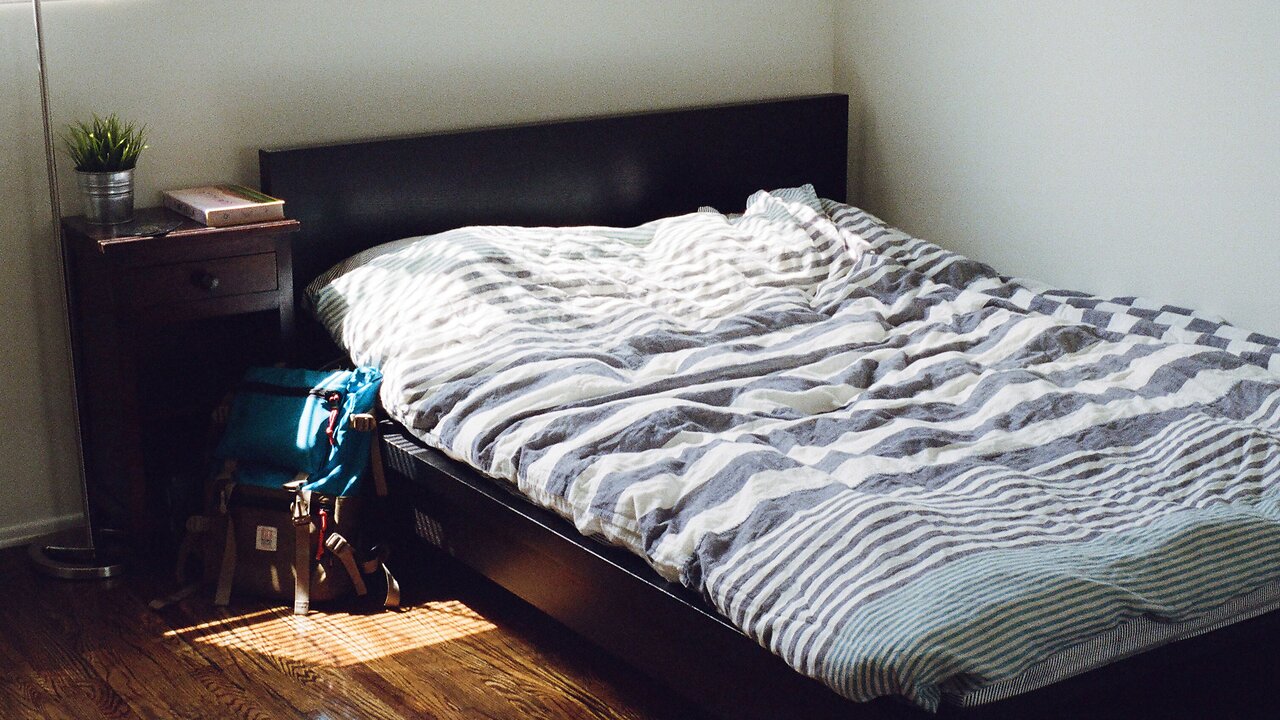Premium Only Content

Bedtime? Study tracks when Americans fall asleep
Is there a “prime” bedtime? A new study found the average American falls asleep at 11:18 p.m.
A new survey of 2,000 general population Americans explored respondents’ nighttime routines and sleep habits — digging into their bedtimes.
The results found that the average respondent begins their nighttime routine at 10:15 p.m., taking 21 minutes to get ready for bed, on average — meaning respondents are then tucked into bed by 10:36 p.m.
But it takes about forty minutes before they actually fall asleep, as results revealed the average American doesn’t drift off until about a quarter past 11 o’clock.
Conducted by Talker Research on behalf of Avocado Green Mattress, the survey found respondents have three mornings per week when they wake up wishing they went to bed earlier the night before.
For those who end up staying awake later than planned, respondents said they're kept up because of chores and other things they need to take care of (29%).
A fifth said they stay up late because night is their favorite time of the day (21%).
Others said they don’t want to go to sleep and “fast forward” to the next workday (15%) — or that it’s the only time they have during the week to connect with their partner (13%).
The survey also looked at how respondents sleep — or don’t sleep — with their partner.
Of respondents who share a bed with their significant other (46% of the sample), only half (49%) sleep better due to having their partner asleep next to them.
On the other hand, one in seven (14%) of these respondents sleep worse, largely due to their partner’s snoring (63%).
Their partner waking them up during the night (tossing/turning, getting up to use the bathroom, etc.) (52%), generally having different nighttime routines (26%) and sleeping at different temperatures (24%) also contributed to poorer sleep when sharing a bed.
“For many, falling asleep and staying asleep is difficult,” said Laura Scott, director of brand marketing at Avocado Green Mattress. “And perfectly controlling your bedtime or wind-down routine isn’t always possible, since life, and sometimes other people, often get in the way. That’s why having a cozy, personalized and supportive sleep environment is so vital for a good night’s rest.”
With back-to-school season quickly approaching, the survey also asked parents how they anticipate this return to the classroom will impact their sleep.
Parents of school-aged children (27% of the sample) said, largely, they’ll get less sleep when their child goes back to school.
Half (53%) of these respondents said they’ll need to wake up earlier (to help get their kids ready for school, drive them to school, etc.), while a quarter said they’ll be going to sleep later — as they need to make lunches in the evening, help their kids with homework, etc.
And one in 10 (11%) won’t sleep as well, as they have more to worry about with their child returning to school.
“Parents with kids in school can have an even harder time getting all the sleep they need, since they’re making time for homework, packing lunches and making meals, driving here and there and trying to spend quality time with their kids,” said Scott. “With so much going on during back-to-school season, ensuring they can get a full, restful night of sleep is more important than ever.”
Survey methodology:
Talker Research surveyed 2,000 general population Americans; the survey was commissioned by Avocado Green Mattress and administered and conducted online by Talker Research between June 23–27, 2025.
We are sourcing from a non-probability frame and the two main sources we use are:
● Traditional online access panels — where respondents opt-in to take part in online market research for an incentive
● Programmatic — where respondents are online and are given the option to take part in a survey to receive a virtual incentive usually related to the online activity they are engaging in
Those who did not fit the specified sample were terminated from the survey. As the survey is fielded, dynamic online sampling is used, adjusting targeting to achieve the quotas specified as part of the sampling plan.
Regardless of which sources a respondent came from, they were directed to an Online Survey, where the survey was conducted in English; a link to the questionnaire can be shared upon request. Respondents were awarded points for completing the survey. These points have a small cash-equivalent monetary value.
Cells are only reported on for analysis if they have a minimum of 80 respondents, and statistical significance is calculated at the 95% level. Data is not weighted, but quotas and other parameters are put in place to reach the desired sample.
Interviews are excluded from the final analysis if they failed quality-checking measures. This includes:
● Speeders: Respondents who complete the survey in a time that is quicker than one-third of the median length of interview are disqualified as speeders
● Open ends: All verbatim responses (full open-ended questions as well as other please specify options) are checked for inappropriate or irrelevant text
● Bots: Captcha is enabled on surveys, which allows the research team to identify and disqualify bots
● Duplicates: Survey software has “deduping” based on digital fingerprinting, which ensures nobody is allowed to take the survey more than once
It is worth noting that this survey was only available to individuals with internet access, and the results may not be generalizable to those without internet access.
-
 1:05
1:05
SWNS
8 days agoWhy 1 in 4 want to go to college again
26 -
 LIVE
LIVE
DeVory Darkins
14 hours agoDemocrats drop SHOCKING Update regarding ICE Agents - Myron Gaines
17,328 watching -
 1:06:21
1:06:21
Timcast
1 hour agoLiberals DEFEND Nazi Tattoo On Communist Democrat Senate Candidate, ITS A CULT
104K88 -

Sean Unpaved
1 hour agoQB Carnage: Woody's Wrath, Payton's Shade, & Saban's Bold CFB Statement
3.97K -
 LIVE
LIVE
Side Scrollers Podcast
2 days ago🔴FIRST EVER RUMBLE SUB-A-THON🔴DAY 3🔴100% REVENUE HELPS CHANGE CULTURE!
1,409 watching -
 11:32
11:32
Sponsored By Jesus Podcast
3 days agoWhat “Speaking the Truth in Love” REALLY Means | Tension of Grace and Truth
7861 -
 29:40
29:40
Paul Barron Network
1 day agoCrypto ETFs Launching... Even With Government SHUT DOWN?! 🤯 Grayscale INTERVIEW
716 -
 2:09:51
2:09:51
Steven Crowder
4 hours agoIs Trump About To Start A War?
297K320 -
 LIVE
LIVE
Dr Disrespect
2 hours ago🔴LIVE - DR DISRESPECT - BATTLEFIELD 6 KILL CHALLENGE - VS VISS
1,350 watching -
 LIVE
LIVE
MattMorseTV
2 hours ago $10.77 earned🔴Senate VOTES to RE-OPEN the GOVERNMENT..? 🔴
1,591 watching